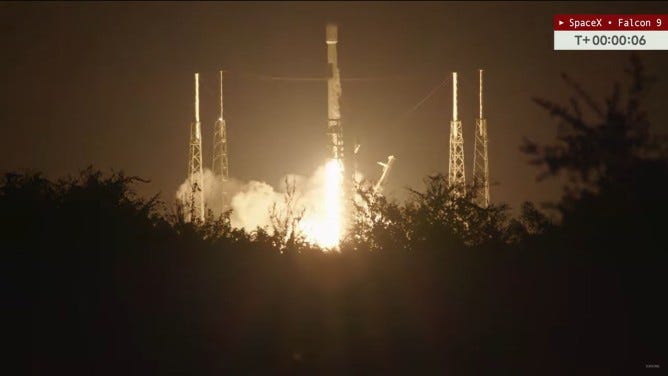British Prime Minister Keir Starmer and United States President Donald Trump have signed a multibillion-pound deal to expand nuclear power across both nations.
Known as the Atlantic Partnership for Advanced Nuclear Energy, the agreement aims to speed up the construction of new reactors and provide reliable, low-carbon energy for high-demand sectors, including energy-intensive artificial intelligence data centres.
Britain’s largest energy supplier, Centrica, will pair up with the US firm X-energy to develop up to 12 advanced modular reactors in Hartlepool, a port town in northeast England, which could power 1.5 million homes and create up to 2,500 jobs.
US nuclear technology company Holtec, France’s state-backed energy giant EDF Energy, and United Kingdom real estate and investment firm Tritax will develop advanced data centres powered by small modular reactors (SMRs) in Nottinghamshire, East Midlands, valued at about 11 billion pounds ($15bn).
London and Washington will also build on an existing collaboration between British Rolls-Royce and American BWXT alongside new commercial projects.
The UK’s ageing nuclear power stations
The UK currently has eight nuclear power stations, all managed by EDF Energy.
Five of these stations are currently generating electricity – Sizewell B, Torness, Heysham 1, Heysham 2 and Hartlepool, while three – Hunterston B, Hinkley Point B and Dungeness B have ceased generation and entered the defuelling phase of decommissioning.
Most of these use older technology, constructed between the 1960s and 1980s, and are now approaching the end of their operational lifespans.

Heysham 1 and Hartlepool were originally scheduled to enter defuelling in March 2026, and Heysham 2 and Torness in March 2028. However, EDF Energy has announced a one-year life extension for Heysham 1 and Hartlepool, and a two-year extension for Heysham 2 and Torness.
This extension allows the plants to continue generating electricity temporarily, helping to maintain the UK’s energy supply until new low-carbon capacity, including Hinkley Point C and other projects, comes online.
According to the Nuclear Industry Association, the UK’s nuclear sector has already created 11,000 new jobs this year following government-led investment.
How much nuclear power does the UK generate?
The UK currently generates about 15 percent of its electricity from nuclear energy, down from more than 25 percent at its peak in the mid-1990s.
Up until the mid-2010s, coal and gas were the dominant sources of electricity in the UK.
However, in 2024, wind power became the UK’s largest electricity source, generating about 30 percent of the total, ahead of gas at 26.3 percent.
This shift was largely driven by increased offshore wind capacity and reduced fossil fuel use.
The different types of nuclear reactors
The deal between the UK and US is focused on small modular reactors (SMRs) and advanced modular reactors (AMRs).
Small modular and advanced modular reactors are smaller than traditional nuclear power stations and have about a third of the generating capacity of traditional nuclear power reactors.
They are designed so that much of the equipment can be built in factories and then transported to the site. This makes them quicker, cheaper and less risky to build.
There are two main types of advanced nuclear technologies:
- Generation III SMRs – these are smaller versions of today’s nuclear reactors, using water for cooling, just like conventional plants.
- Generation IV and AMRs – these use new cooling methods or fuels, which could make them cheaper, more flexible and useful for things beyond electricity, such as providing heat for industry.
Nuclear reactors themselves come in different forms, with most using water to cool their cores while others use gas or metals. While SMRs are a different reactor design they’re not a distinct type of reactor.
About 70 percent of the world’s more than 400 reactors are pressurised water reactors (PWRs), about 15 percent are boiling water reactors and 11 percent are pressurised heavy water reactors, according to the World Nuclear Association.
US nuclear energy expansion
For the US, the deal boosts American nuclear technology exports, strengthens commercial ties, and creates opportunities for US companies to develop reactors and power-intensive infrastructure abroad. The companies estimate that the overall programme could deliver at least 40 billion pounds ($54.4bn) in economic value.
The global demand for advanced nuclear technologies is expected to grow sharply by 2050, driven by the need for low-carbon, reliable energy. In the US, demand for nuclear power is expected to grow from 100GWe to 400GWe by 2050, with Trump’s administration aiming to quadruple national nuclear capacity and accelerate construction of new reactors to meet rising energy needs, including powering energy-intensive industries like AI data centres.
How long does it take to build a nuclear reactor?
The global average for building a nuclear reactor is about seven years, with some outlier long builds.
China has become very efficient at building reactors, often in five to six years, thanks to standardised designs, strong government support and large-scale construction programmes.
Japan historically completed some reactors in three to four years, mostly before stricter safety regulations post-Fukushima.
About 85 percent of the 400-plus reactors in the world were built within 10 years.

 3 months ago
24
3 months ago
24













































